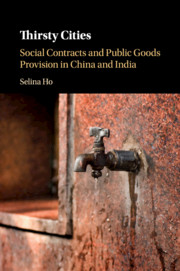Book contents
References
Published online by Cambridge University Press: 04 January 2019
- Type
- Chapter
- Information
- Thirsty CitiesSocial Contracts and Public Goods Provision in China and India, pp. 260 - 283Publisher: Cambridge University PressPrint publication year: 2019

